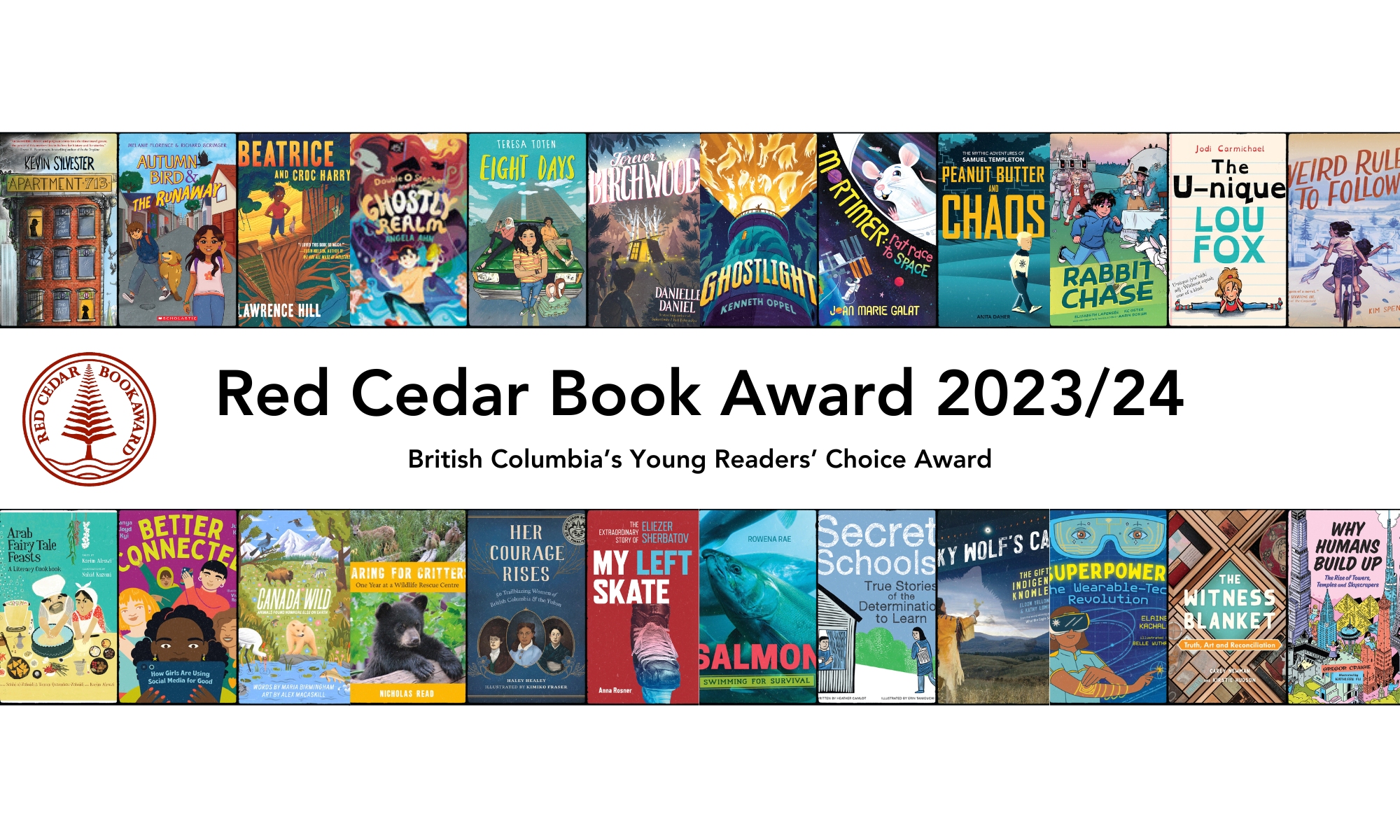Red Cedar Book Awards — 2016 Winners & 2017 Nominees
The Red Cedar Awards Gala 2016 was a resounding success! More than 200 people attended the Gala in Vancouver, which featured presentations by young readers & nominees, door prizes donated by Kidsbooks, and a book signing after-party with official bookseller Kidsbooks. We also announced the 2016 winners!
There were so many wonderful Canadian books nominated for the 2016 Red Cedar Book Award in the fiction category. It was a close race, between cows, cats, campers, ghosts, gardeners, hockey players, guitar players, siblings, friends, and (of course) zombies.
But the young reader voters have spoken and chosen their favourite… And the winner of the 2015/2016 Red Cedar Fiction Award Winner is ….
We also had some fantastic nominations in the information book category for the Red Cedar Award. We learned about history, the environment, animals, quirks of the human body, viruses and germs. Oh, so many germs…
The young readers of British Columbia have cast their ballots, and chosen their favourite… And the winner of the 2015/2016 Red Cedar Information Book Award Winner is….
We also announced the 2016/2017 Red Cedar Nominees! And the nominees are…
Fiction Book Nominees
The Blackthorn Key by Kevin Sands
Masterminds by Gordon Korman
The Case of the Missing Moonstone by Jordan Stratford and Kelly Murphy
Lost in the Backyard by Alison Hughes
Seven Dead Pirates by Linda Bailey
Sight Unseen by David Carroll
Speechless by Jennifer Mook-Sang
Eco Warrior by Philip Roy
Connecting Dots by Sharon Jennings
The Nest by Kenneth Oppel
Shot in the Dark by Janet M. Whyte
The Summer We Saved the Bees by Robin Stevenson
Information Book Nominees
Animal Hospital: Rescuing urban wildlife By Julia Coey
The Art of the Possible: An everyday guide to politics by Edward Keenan, illustrations by Julie McLaughlin
Baseballogy: Supercool facts you never knew. By Kevin Sylvester
Colossal Canada: 100 epic facts and feats By Elizabeth Macleod and Frieda Wishinsky
DNA Detective By Tanya Lloyd Kyi, illustrations by Lil Crump
Elephant Journey: The true story of three zoo elephants and their rescue from captivity By Rob Laidlaw, art by Brian Deines
Friend or Foe: The whole truth about animals that people love to hate By Etta Kaner, illustrations by David Anderson
Give Me Wings: How a choir of former slaves took on the world By Kathy Lowinger
Power up!: A visual exploration of energy By Shaker Paleja, art by Glenda Tse
Trash Talk: Moving toward a zero-waste world Written by Michelle Mulder
What’s the Buzz?: Keeping bees in flight By Merrie-Ellen Wilcox
A huge thank you to all of our amazing group leaders, passionate young readers, generous sponsors, talented authors, brilliant publishers and hard-working volunteers for another fantastic Red Cedar Award season!













